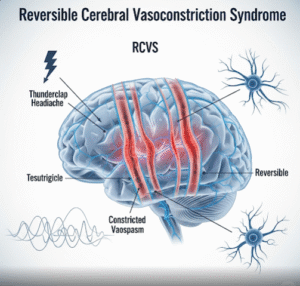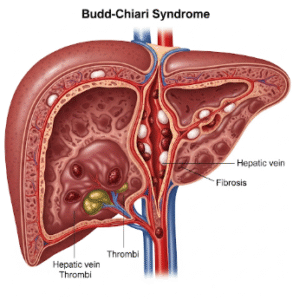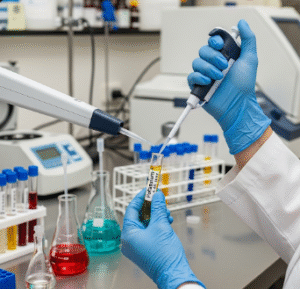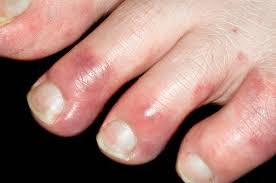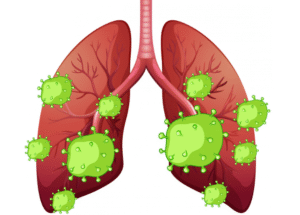Overview
A high white blood cell (WBC) count, also known as leukocytosis, occurs when the number of WBCs in the blood exceeds the normal range. White blood cells are essential components of the immune system, helping the body fight infections, respond to inflammation, and detect abnormal cells.
➤ Leukocytosis may indicate infection, inflammation, stress, or blood disorders.
➤ It can be temporary or persistent, depending on the underlying cause.
➤ In Korea, hospitals and clinics provide diagnostic testing, monitoring, and treatment to manage high WBC counts and address potential complications.
Key Facts
► Definition: An elevation in circulating white blood cells above the normal range (typically >11,000 cells/µL in adults).
► Prevalence: Can occur in all age groups; common in acute infections, inflammatory conditions, or stress responses.
► Symptoms: Often asymptomatic but may include fever, fatigue, or signs of underlying disease.
► Risk factors: Infections, chronic inflammation, smoking, stress, leukemia, and certain medications.
► Treatment in Korea: Focuses on identifying and managing the underlying cause, monitoring WBC trends, and preventing complications.
What Is High White Blood Cell Count?
Leukocytosis is a condition where the immune system produces an excessive number of white blood cells.
➔ WBCs include neutrophils, lymphocytes, monocytes, eosinophils, and basophils, each performing specific immune functions.
➔ Elevated WBC counts are often a response to infection, inflammation, or stress, but may also indicate hematologic disorders.
➔ Persistent or unexplained leukocytosis may require specialist evaluation to rule out serious conditions.
What Symptoms Are Related to High White Blood Cell Count?
Many people with high WBC counts are asymptomatic, but symptoms may arise due to the underlying cause:
→ Fever and chills, indicating infection.
→ Fatigue or weakness due to the body’s response to illness.
→ Night sweats or weight loss, often seen in chronic conditions or malignancies.
→ Shortness of breath, chest pain, or palpitations in severe cases.
→ Frequent infections or slow-healing wounds, paradoxically if WBCs are dysfunctional.
→ Swollen lymph nodes, spleen, or liver in hematologic disorders.
Causes / Possible Causes of High White Blood Cell Count
Infections
➤ Bacterial infections – Most common cause; WBCs rise to fight pathogens.
➤ Viral or fungal infections – Can also trigger elevated counts, though sometimes WBCs decrease in viral infections.
Inflammatory and Immune Conditions
➔ Autoimmune diseases – Rheumatoid arthritis, lupus (SLE), or inflammatory bowel disease may elevate WBCs.
➔ Allergic reactions – Eosinophil count rises in response to allergens or asthma.
Stress-Related Causes
→ Physical or emotional stress can temporarily increase WBC counts.
→ Pregnancy or strenuous exercise may cause mild leukocytosis.
Hematologic and Malignant Causes
➤ Leukemia – Cancer of white blood cells causing extremely high counts.
➤ Myeloproliferative disorders – Abnormal production of WBCs in bone marrow.
Medications and Toxins
➔ Corticosteroids or certain epinephrine-containing medications can elevate WBCs.
➔ Smoking or chemical exposure may also contribute.
When Should I See My Doctor?
Seek medical evaluation if:
➤ WBC count is persistently high without an obvious cause.
➤ You experience fever, unexplained weight loss, night sweats, or recurrent infections.
➤ Swelling of lymph nodes, liver, or spleen occurs.
➤ There are symptoms of fatigue, shortness of breath, or bleeding.
➤ Early evaluation can help identify infections, autoimmune disorders, or blood cancers.
Care and Treatment
Lifestyle and Self-Care Measures
► Maintain good hygiene and infection prevention.
► Avoid smoking, excessive alcohol, or exposure to toxins.
► Ensure adequate rest, nutrition, and hydration.
► Monitor for new symptoms such as fever, pain, or fatigue.
Medical Treatments
➔ Treat the underlying cause: antibiotics for infections, anti-inflammatory medications for autoimmune diseases.
➔ Medications to control WBC production in hematologic disorders.
➔ Hospitalization may be required for severe leukocytosis or complications.
➔ Regular monitoring of WBC count and differential to track response.
Procedural and Advanced Interventions
→ Bone marrow biopsy to assess marrow function in unexplained leukocytosis.
→ Chemotherapy or targeted therapy in cases of leukemia or myeloproliferative disorders.
→ Immunotherapy for autoimmune causes or specific malignancies.
→ Supportive care including fluids, transfusions, or infection prophylaxis as needed.
Treatment Options in Korea
Diagnosis and Assessment
➤ Complete blood count (CBC) with differential to determine WBC subtype elevation.
➤ Blood tests for infection markers, inflammation, or autoimmune activity.
➤ Imaging studies if organ enlargement or malignancy is suspected.
➤ Bone marrow aspiration or biopsy in unexplained or persistent cases.
Non-Surgical Care
► Treat infections with appropriate antibiotics, antivirals, or antifungals.
► Anti-inflammatory or immunosuppressive therapy for autoimmune conditions.
► Lifestyle interventions to reduce stress and improve overall health.
Advanced Care
➔ Hematology consultation for blood disorders.
➔ Chemotherapy, targeted therapy, or bone marrow transplantation for malignant causes.
➔ Hospitalization for severe leukocytosis, infection risk, or organ involvement.
Rehabilitation and Lifestyle Support
→ Education on infection prevention, symptom monitoring, and healthy lifestyle choices.
→ Long-term follow-up to monitor WBC trends and manage chronic conditions.
→ Support groups and counseling for patients with chronic or serious illnesses.
Korean hospitals provide comprehensive evaluation, advanced treatment, and preventive care for patients with high white blood cell counts, ensuring timely intervention, safer immune function, and improved overall health.


